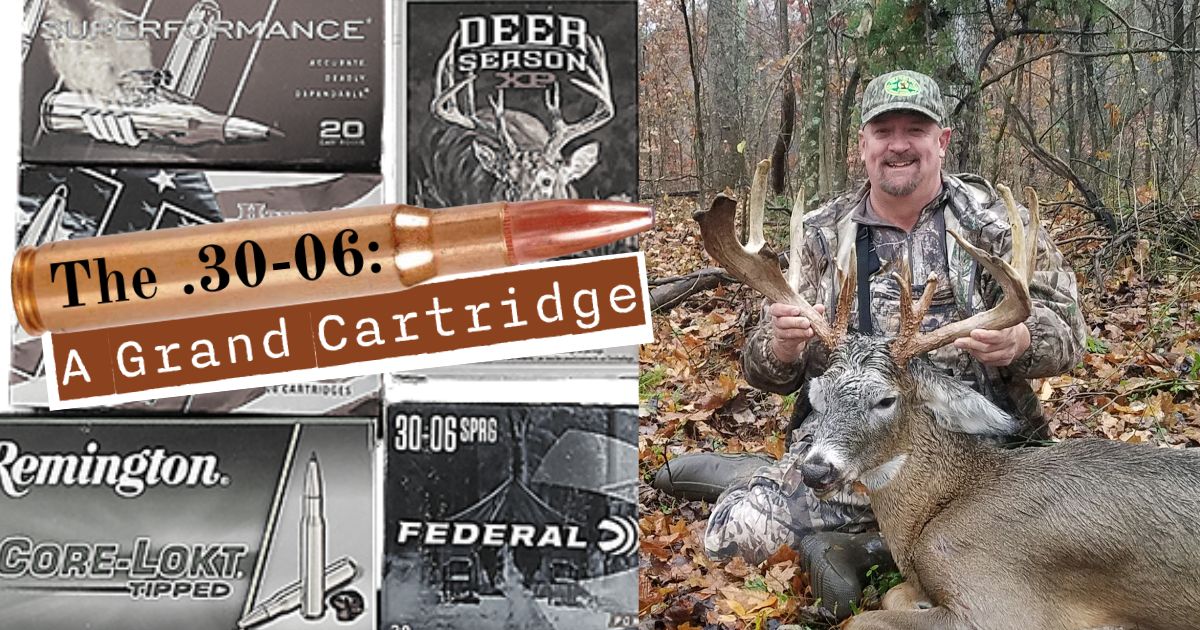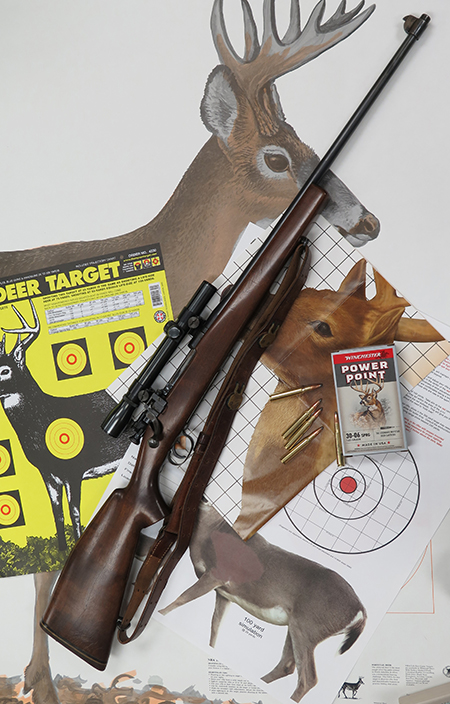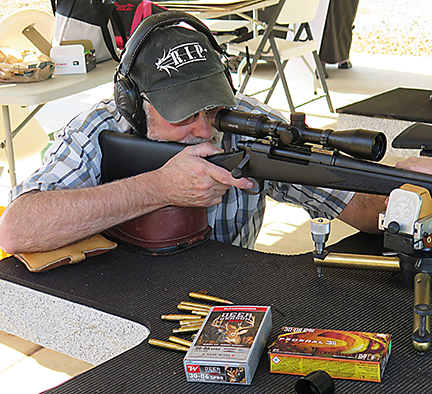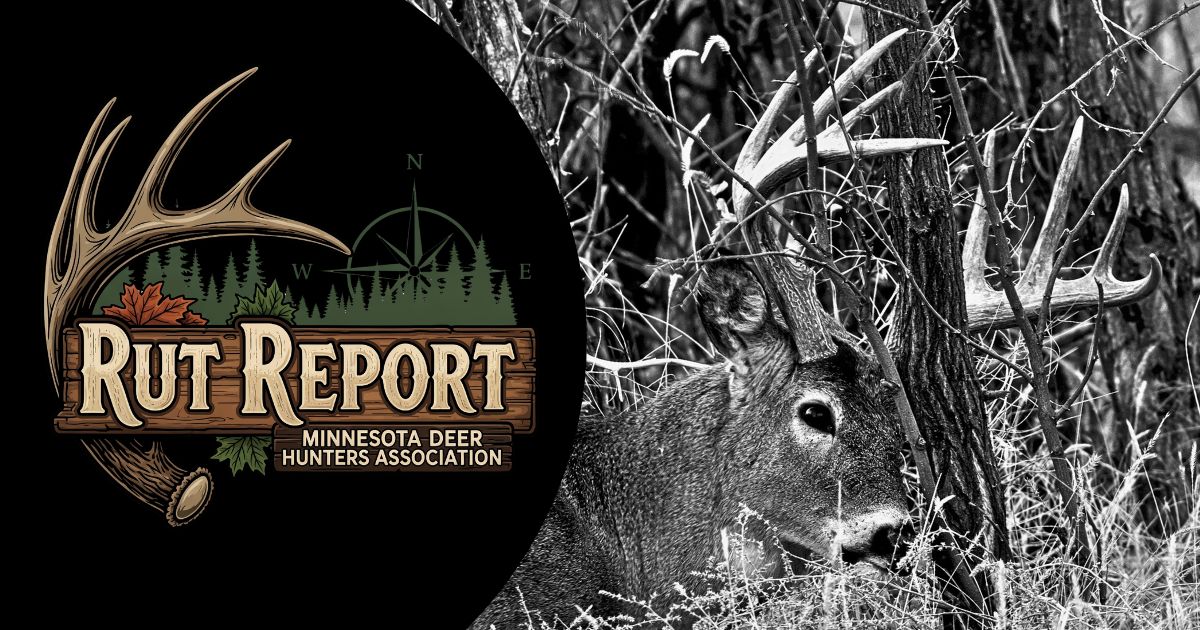
- Roy Welch
- From Whitetales
- Hits: 6221
The .30-06: A Grand Cartridge
- Roy Welch
- From Whitetales
- Hits: 6221
It was a cold Wyoming morning with a light wind and a foot of snow on the ground. Clearing a pine-covered ridge, overlooking a steep-sided canyon, I spooked a herd of white-tailed deer that fled up the canyon floor, climbing out and halting on the far side a good 500 to 600 yards away.
As this was the last day of the hunt, I sat down in the snow, established a solid sitting position, and scanned the herd through the Weaver K4 scope on my Remington 721 .30-06. Picking out a deer slightly separated from the herd, I placed the scope crosshair well above the deer’s chest and squeezed off a shot. At the sound of the shot, the herd fled into a stand of trees with my target deer lagging behind, visibly wounded. It took me the better part of an hour to climb down into the canyon and reach the far side where the deer had halted. Blood and tracks in the snow made tracking and finding the wounded deer easy. However, lessons learned from this experience were: 1) the .30-06 was quite adequate for long-range shots at deer-sized targets; 2) shot placement was not reliable due to shooter error, estimated distance error, and environmental factors; and 3) shots at excessive distances should be resisted. In the many years since this experience, hunts in Wisconsin, Virginia, Maine, and Georgia have yielded few shots beyond 200 yards.

The .30-06 Springfield cartridge has been with us for over 117 years, serving as the primary U.S. military cartridge in World Wars I and II, the Korean War, and to a lesser extent for snipers in the Vietnam War. In the civilian world, the .30-06 has been a perennial favorite cartridge for North American big game.
On a personal note, I grew up with the .30-06, both for hunting and high-power competition matches at the local, state, regional, and national level. Popular rifles included war-surplus Springfield and 1917 Enfield bolt-action rifles. Since these rifles had clip slots, they were well-suited for match competitions in the 1950s and 1960s. I recall my father purchasing both a .30-06 Springfield and an Enfield from the Office of the Director of Civilian Marksmanship for about $20.00 each. He converted the Springfield to a sporterized hunting rifle, and the 1917 Enfield to a match rifle (Figure 2). Like many shooters in the post-WWII environment, my father was able to produce serviceable hunting and competition rifles for minimal cost.
Sight settings for 200 yards with Lake City military ball ammunition were established by placing a target against an old oak tree and shooting off an ironing board benchrest. A lesson learned upon examining targets and holes in the back of the oak tree indicated that it took a considerable backstop to halt the penetration of .30-06 ball ammunition.
Meanwhile, my desire for my own centerfire hunting rifle continued to escalate. An advertisement appeared in the local newspaper offering a used Remington Model 721 chambered for the .30-06 cartridge for, as I recall, $45.00, an affordable proposition for a young teenager. My father took me to look at the rifle. As we already had reloading dies, brass, and components for a .30-06, the Model 721 came home with us.

Initial experience with the Model 721 was not very satisfactory. The skinny stock was too short, the comb too low, the hard butt plate a bruiser, and accuracy tests disappointing. Even in hindsight, and realizing any centerfire deer rifle in the early 1950s consistently producing three-shot groups of less than 2 inches at 100 yards with commercial ammo was a keeper, the 3-inch groups with commonly available military surplus 150-grain ball ammunition were nothing to write home about.
The first order of business, therefore, was to replace the factory stock. I had spent many hours watching my father use hand tools to carve stocks from walnut blanks. However, I realized that I had neither the skill nor patience to replicate his efforts. As an alternative, a semi-inletted walnut sporter stock was ordered from E.C. Bishop & Son and, with guidance from my father, I completed the inletting, shaping, and finishing – producing a stock that was both attractive and functional. Glass bedding came later. Accuracy with ball, commercial factory, and handloaded ammunition was substantially improved, making the Model 721, 30-06, a first-class hunting rifle.
Today, many years later, the quality and variety of centerfire factory ammunition have improved significantly, with bullets designed to provide controlled expansion on soft-skinned game. More than 120 commercial loads now can be purchased for the .30-06, with lead-core copper-jacketed and monolithic bullet weights ranging from 125 to 220 grains. Optimum .30-06 bullet weights for deer hunting are generally considered to be 150, 165, and 180 grains, with 150 and 165 grains the popular choice.
Muzzle velocities of 2,910 fps are listed for 150-grain loads and 2,800 fps for 165-grain loads, producing muzzle energies of 2,800 to 3,000 ft.-lbs. Popular 150-grain and 165-grain ammunition choices include Federal Power-Shok, Federal Fusion, Remington Core-Lokt, Winchester Deer Season XP, and Hornady American Whitetail, all of which can be purchased for $30.00 to $40.00 for a box of 20 rounds (Figure 3).
If shots at distances greater than 400 yards are anticipated, long-range loads having bullets of higher ballistic coefficient are worth considering, but at a cost of approximately $45.00 to $70.00 per box. These include Hornady Precision Hunter, Federal Premium Terminal Ascent, Nosler Trophy Grade AccuBond, Barnes VOR-TX, Remington Core-Lokt Tipped, and Remington Premier Scirocco rounds.

Although not required for deer, high-energy 150- and 165-grain Superformance loads from Hornady that boost muzzle velocities to over 3,000 fps for 150-grain loads and over 2,900 fps for 165-grain loads are available, making the ‘06 a light .300 magnum performer. Hornady .30-06 Springfield Custom Lite reduced-recoil loads pushing 125-grain Super Shock Tip (SST) bullets at 2,700 fps with a muzzle energy of 2,023 ft.-lbs. are available and suitable for shots at deer at distances out to approximately 200 yards.
Recoil for a standard 150- or 165-grain load in an 8-pound rifle is about 19 ft.-lbs., and 22 ft.-lbs. for high-energy loads. The reduced loads with 125-grain bullets generate a recoil of about 12 ft.-lbs., slightly more than the recoil of 100-grain bullets in a 243 Winchester.
Recent literature tends to imply that the .30-06 is being replaced by long-range cartridge developments from Hornady, Nosler, and Weatherby. This raises the question of whether the .30-06 is truly an antiquated cartridge. Ballistic data does not verify this for shots out to 400 to 500 yards. For example, taking the new Hornady 6.5mm and 7mm Precision Rifle Cartridges (PRC) released in 2018 and 2022, respectively, as a basis for comparison, these cartridges with Hornady Extremely Low Drag-Expanding (ELD-X) bullets of 143 and 175-grains have ballistic coefficients of 0.625 to 0.689 and a muzzle velocity of approximately 3,000 fps.
When zeroed for 200 yards, they yield bullet drops of 6.0 to 36.2 inches at 300 to 500 yards, with 10-mph crosswind deflections of 4 to 13 inches. By comparison, high-energy Hornady .30-06 Superformance cartridges with 150- and 165-grain SST bullets also have muzzle velocities of approximately 3,000 fps, but have lower ballistic coefficients of 0.415 to 0.447. When zeroed for 200 yards, these ’06 loads yield bullet drops of 6.4 to 40.7 inches at 300 to 500 yards, which is not appreciably different from the bullet drops of the 6.5mm PRC and 7mm PRC. However, because of the higher ballistic coefficients of the PRC bullets, wind deflection out to 500 yards is approximately two-thirds that of the .30-06. The bottom line is that out to 450 to 500 yards there is no significant difference in trajectory between the high-energy 150-grain and 165-grain Hornady Superformance deer loads and top loads for the 6.5mm PRC and 7mm PRC, the advantage of the latter cartridges increasing at distances beyond approximately 500 yards.
Full-power 150- and 165-grain .30-06 loads have impact energies above 1,000 ft.-lbs. at 500 yards, the minimum recommended for deer. Unless you plan at shooting deer at distances in excess of 500 yards in strong windy conditions, the .30-06 factory ammunition options are hard to beat (Figure 4).
If you are a handloader, modern streamlined bullets such as the Hornady ELD-X Precision Hunter, Berger Very Low Drag (VLD), Nosler AccuBond, and Sierra Tipped GameKing, with ballistic coefficients of approximately 0.500, in combination with standby powders such as IMR 4064 and H4350, or the many other possible powder selections, provide options for tailoring both medium- and long-range loads for your .30-06. Load data are available as printed manuals or can be accessed on your computer. Nosler and Hodgdon, in particular, provide easily accessed load data.
Despite its age, with modern loads, the .30-06 is suitable for all North American game animals. It is an excellent choice for the deer hunter who may have the opportunity for elk, moose, or bear.
Over the last 50 years, as noted below, well-known gun writers and hunters have attested to the all-around capability of the ’06 cartridge:
Jack O’Connor (1970) “But for all kinds of jobs in the open and in the timber, on big animals and small, at long range and short, there isn’t anything anymore versatile than the turn-of-the century 30/06.”
Rick Jamison (1989) “The .30-06. There is no better choice for hunting big game in North America. The 30-06 is the most versatile cartridge ever.”
Craig Boddington (2001) “When in doubt choose a .30-06.”
Phil Shoemaker (2009) “Anyone who claims the .30-06 is not effective has not used one, or else is unwittingly commenting on their marksmanship.”
John Barsness (2009) “I have taken a much wider variety of game with the .30-06 than any other round, ranging from American pronghorn and African springbok to elk and kudu on three continents. It works.”
Layne Simpson (2016) “Long live the .30-06 Springfield. May its voice never be silent for as long as game all around the world is there to be hunted.”
Terry Wieland (2019) “Today, the .30-06 is 113 years old – barely older than smokeless powder itself – yet is still about the best all-around big-game cartridge we have.”
Joseph von Benedikt (2019) “But if forced by the Four Horsemen of the Apocalypse to choose one firearm with which to hunt anything from coues deer to moose – with the occasional zombie thrown in – this .30-06 is my rifle.”
Wayne van Zwoll (2021) “The .30-06 is revered by hunters worldwide. You’ll find .30-06 ammunition nearly everywhere cartridges are sold.”
David Petzal (2021) “You can’t go wrong with the .30-06. The guts of it are that whatever you want the ‘06 to do, it will do.”
Ron Spomer (2023) “Did you know the .30-06 of the 21st century nearly matches the 300







